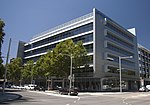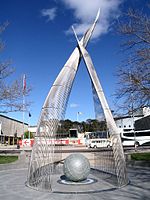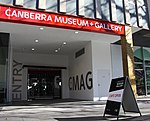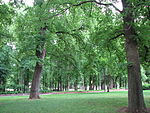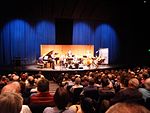Canberra Centre

Canberra Centre is a large shopping centre located in the northern section of the Canberra City Centre, Australian Capital Territory, Australia, being the second largest centre in the Australian Capital Territory, behind Westfield Belconnen. It opened on 6 March 1963 as the Monaro Mall, becoming the first in Australia to contain three floors and be fully enclosed, though would later expand to cover a substantial outdoor component on Garema Place. It was designated an Australian Capital Historic Site in 1997. It underwent a $220 million redevelopment and became the Canberra Centre in 1989. It was the first shopping centre in Canberra to have a car park operated by Car Park Ticket Machines. As at December 2020, Canberra Centre was 94,259 m² in size with over 403 retailers.
Excerpt from the Wikipedia article Canberra Centre (License: CC BY-SA 3.0, Authors, Images).Canberra Centre
Petrie Street,
Geographical coordinates (GPS) Address External links Nearby Places Show on map
Geographical coordinates (GPS)
| Latitude | Longitude |
|---|---|
| N -35.280555555556 ° | E 149.13333333333 ° |
Address
Canberra Centre (Monaro Mall
Petrie Street
2601 , City
Australia
Open on Google Maps
